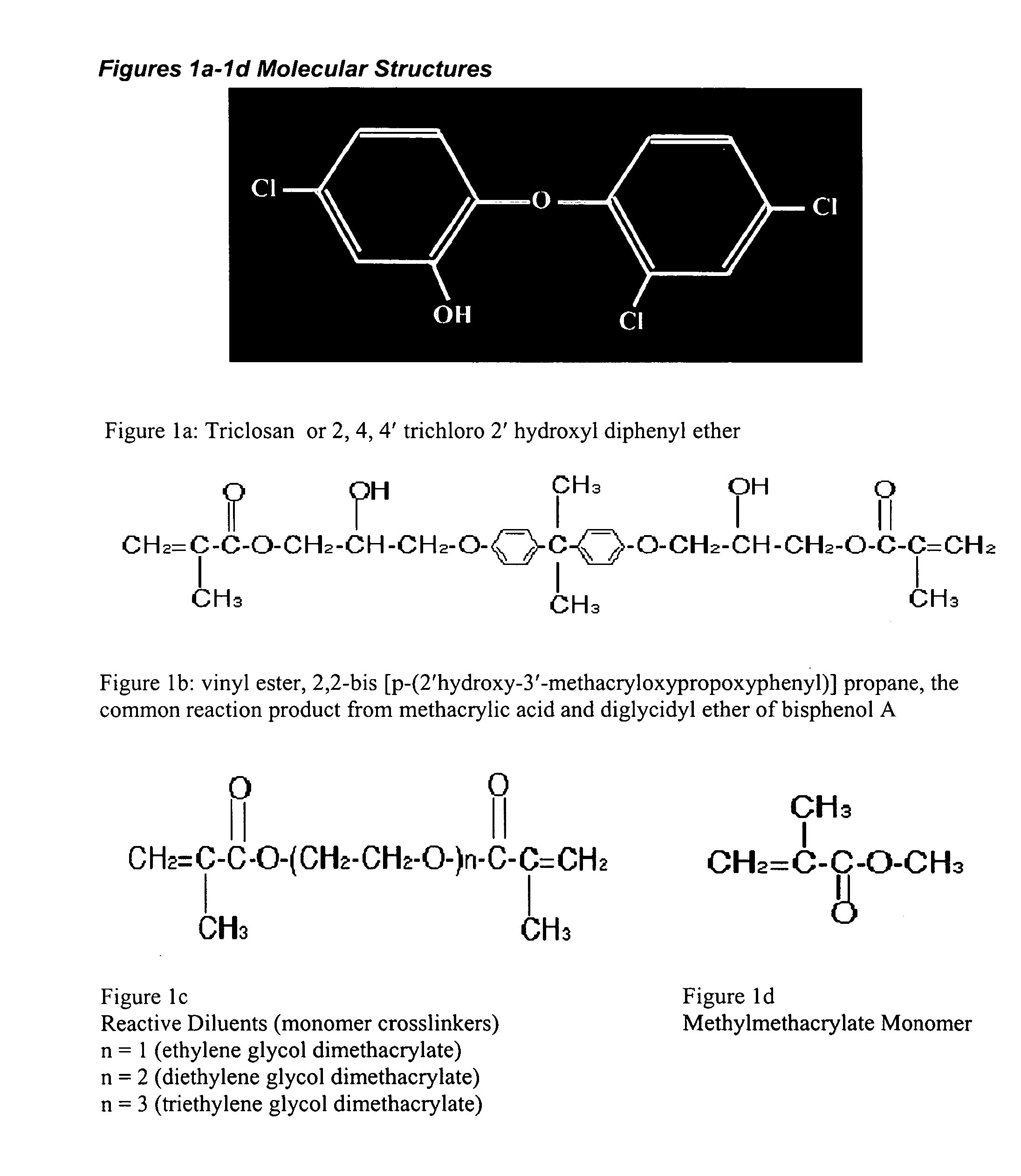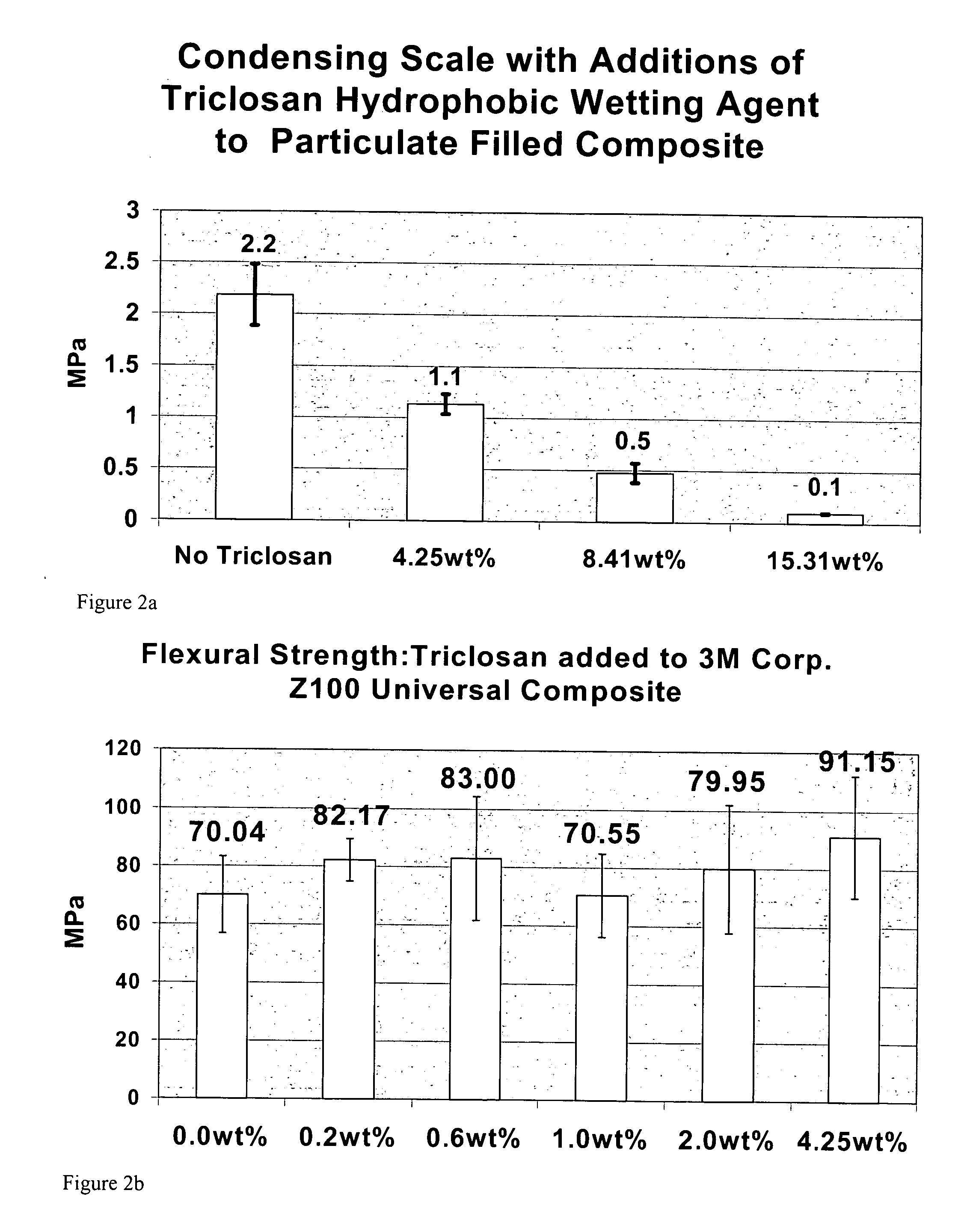Electrochemical compatibilizer and hydrophobic wetting agent for fiber reinforced vinyl esters and related thermosets
- Summary
- Abstract
- Description
- Claims
- Application Information
AI Technical Summary
Benefits of technology
Problems solved by technology
Method used
Image
Examples
Embodiment Construction
Strength Test Standards
[0099] Flexural Strength is a common test recommended for small samples to evaluate mechanical properties by the American Standards Testing for Materials, The American Dental Association, the American National Standards Institute and the International Standards Organization.
Hydrophobic Wetting Agent
[0100] Diphenyl Triclosan electrochemical functionality disrupts secondary bonding combined with intermolecular matching between bisphenyl epoxy derived vinyl esters and related oligomers or monomers to significantly reduce viscosities of neat resins and composites. As a nonpolar molecule, Triclosan can be considered a novel hydrophobic wetting agent. To best demonstrate the ability of Triclosan to lower viscosity, a highly filled composite derived from 3M Corp. silane treated zirconium silicate particulate 84 wt % with a vinyl ester:crosslinking diluent monomer ratio of 2:1 was formulated to accentuate thickened consistency. Viscosity reductions were measured as...
PUM
| Property | Measurement | Unit |
|---|---|---|
| Length | aaaaa | aaaaa |
| Angle | aaaaa | aaaaa |
| Angle | aaaaa | aaaaa |
Abstract
Description
Claims
Application Information
 Login to View More
Login to View More - R&D
- Intellectual Property
- Life Sciences
- Materials
- Tech Scout
- Unparalleled Data Quality
- Higher Quality Content
- 60% Fewer Hallucinations
Browse by: Latest US Patents, China's latest patents, Technical Efficacy Thesaurus, Application Domain, Technology Topic, Popular Technical Reports.
© 2025 PatSnap. All rights reserved.Legal|Privacy policy|Modern Slavery Act Transparency Statement|Sitemap|About US| Contact US: help@patsnap.com



